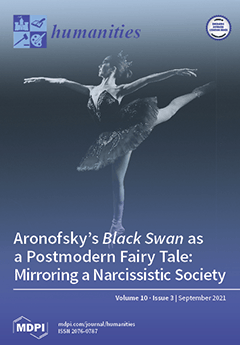Anthony Leigh (d. 1692) built his career as a Restoration comedic actor by playing a combination of queer, lascivious, old, and/or disabled men to audiences’ great delight. In this essay, I key in on two plays that frame Leigh’s career: Thomas Durfey’s
The
[...] Read more.
Anthony Leigh (d. 1692) built his career as a Restoration comedic actor by playing a combination of queer, lascivious, old, and/or disabled men to audiences’ great delight. In this essay, I key in on two plays that frame Leigh’s career: Thomas Durfey’s
The Fond Husband (1677) and Thomas Southerne’s
Sir Anthony Love (1690). In
The Fond Husband, a younger Leigh plays a “superannuated,” almost blind and almost deaf Old Fumble who, in the first act, kisses a man because he cannot navigate the heterosexual erotic economy of the play (as over-determined by able-bodiedness). Over a decade later, in
Sir Anthony Love, Leigh plays an aging, queer Abbé who is so earnestly erotically invested in Love’s masculinity (unaware that Love is a woman in drag) that he attempts to seduce Love with dancing. I bring the beginning and end of Leigh’s stage life together to argue that Leigh’s body, performing queerly, asks audiences to confront the limits of pleasure in sustaining fantasies of the abled, autonomous heterosexual self. Using these two Restoration comedies that bookend Leigh’s career, I trace pleasures and queer structures of feeling experienced in the Restoration playhouse. While Durfey and Southerne’s plays-as-texts seek to discipline unruly, disabled queer bodies by making Fumble and the Abbé the punchline, Leigh’s performances open up alternative opportunities for queer pleasure. Pleasure becomes queer in its ability to undo orderings and fantasies based on autonomy (that nasty little myth). In his
Apology, Colley Cibber reveals the ways that Leigh’s queerly performing body engages the bodies of audience members. In reflecting on the reading versus spectating experience, Cibber remarks, “The easy Reader might, perhaps, have been pleas’d with the Author without discomposing a Feature; but the Spectator must have heartily held his sides, or the Actor would have heartily made them ache for it” (89). Spectatorship is not a passive role, but rather a carnal interplay with the actor, and this interplay has immediate, bodily implications. Audiences laugh. They ache. They touch. Whereas the reader of a play in private can maintain composure, audiences in the theatre are contrarily discomposed, non-autonomous, and holding onto their sides. Leigh’s ability as a comedian energizes the text and produces pleasure on an immediate, corporeal level for audiences. And that pleasure is generated through stage business built on touching, feeling, and seducing male-presenting characters. Spectatorship may, in fact, be a queer experience as Leigh’s queerly performing body exposes the limits of autonomy.
Full article





